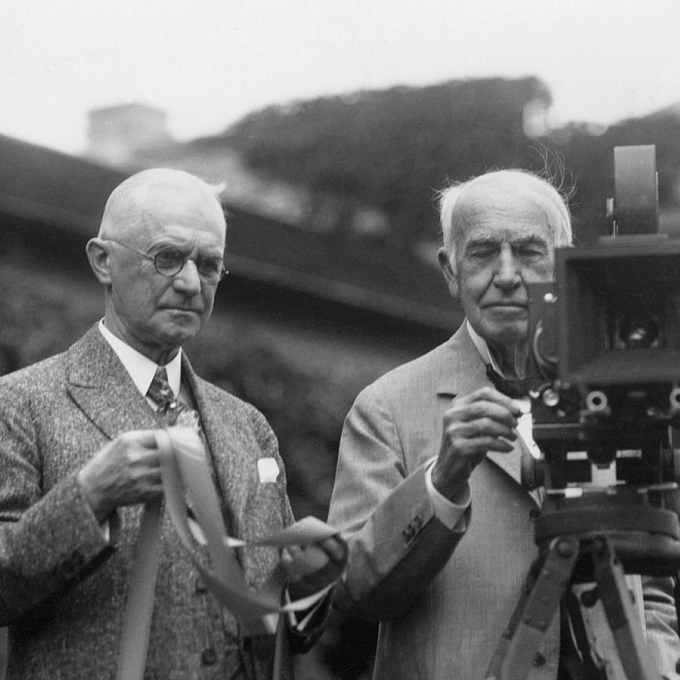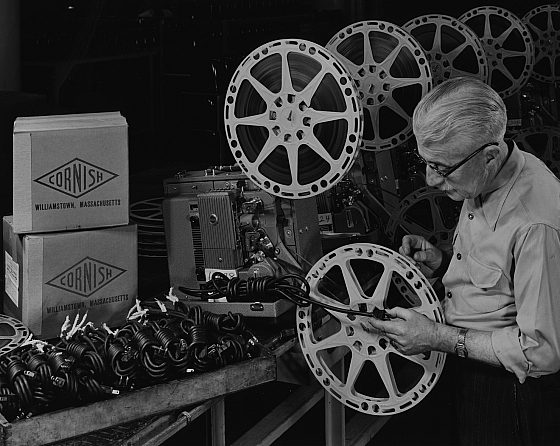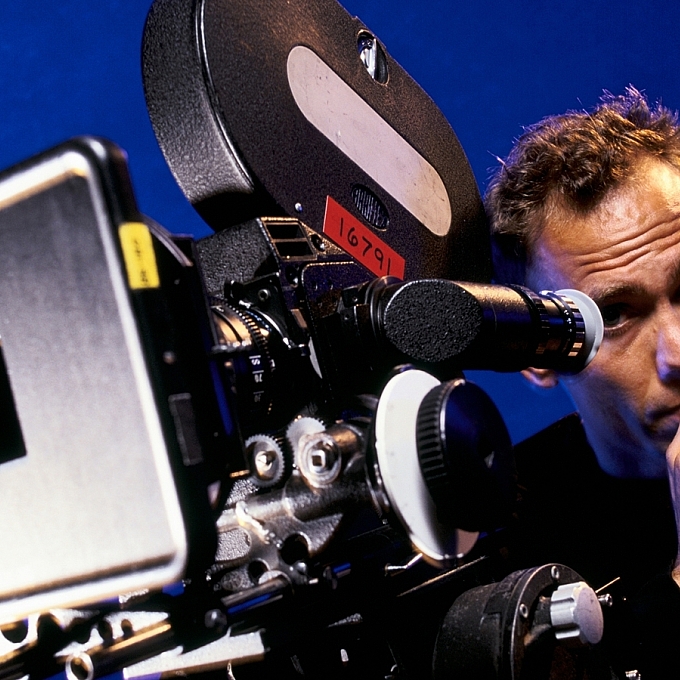

Motion Pictures
A Pioneer in Motion Pictures
When George Eastman marketed the first commercial transparent roll film in 1889, it enabled inventor Thomas Edison to develop the first motion picture camera in 1891. By 1896, Kodak was marketing film specially coated for motion picture use.
Even with today’s digital technologies, a faction of filmmakers continue to use Kodak film to record the action on movie sets, and in some countries, those movies are still distributed to theaters as printed copies on film.

Since the inception of the Academy Awards, more than 80 Oscar®-winning "Best Pictures" have been shot on Kodak film. The company even has nine Oscar® statuettes of its own -- for scientific and technical excellence.
That's more than any non-studio company – not surprising given that Kodak has been involved in technological innovations throughout the industry's history. Kodak:
- marketed its first film designed for making then-new "sound" motion pictures in 1929.
- earned a 1949 Academy Award for a tri-acetate safety film base (introduced in 1948) for motion picture film. This eliminated a significant safety hazard posed by the flammable nitrate film base it replaced, and also helped ensure the long-term integrity of the films.
- earned another Academy Award for EASTMAN Color Negative and Color Print Films (introduced in 1950), which helped popularize color movies for theaters and television.
- improved emulsion technology with its EASTMAN EXR Color Negative Film products in 1989. These gave cinematographers significant creative flexibility, providing more underexposure latitude; truer colors in fluorescent light, and greater sharpness.
In 2002, KODAK VISION2 Motion Picture Films became first in a series of products designed to work with both film and digital post-production systems. In fact, the technology incorporated in these films earned Kodak its ninth Oscar® statuette. Further building on that technology, a family of KODAK VISION3 Films was launched in 2007.
With digital capture and distribution more the norm in today’s motion picture industry, Kodak still provides high-quality products for “film worthy” productions.